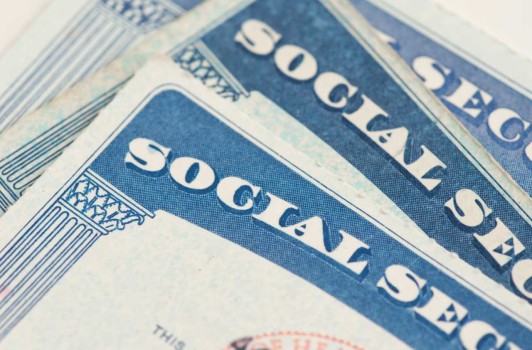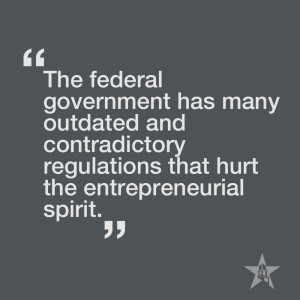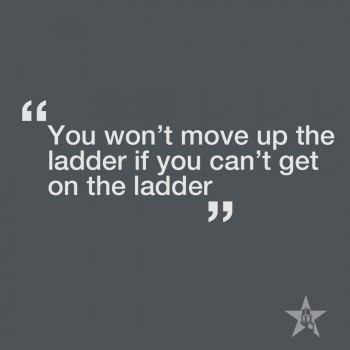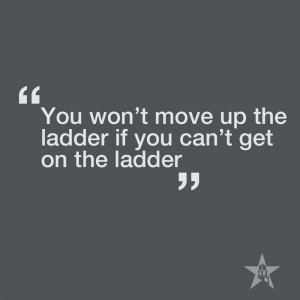The Black Swan and the Emperor’s New Clothes
Why are “experts” unable to predict most of history’s greatest events?
Not too long ago, an emperor was so exceedingly fond of new clothes he spent his money on being well dressed. Two swindlers came to town pretending to be the world’s best weavers and claimed they developed a wardrobe so fine it was believed only the intelligent could see it. The Emperor debuted his new clothes to the town folk, who showered the Emperor with kind words. Out of fear of looking stupid, nobody confessed that the emperor was naked. However, a little child yelled, “He is nude!” Yet, the Emperor walked more boldly than ever, as his noblemen held high his fake cloak and train that weren’t there at all.
Today’s elite, intellectuals, the mainstream media, Hollywood, and academics, have been sold a new set of clothes that have left them blind and naked to world events. Through their “infallible” knowledge from faulty inductive reasoning, these experts have developed theories that have become a new secular theology. Their arguments of “settled science” mean the educated faithful must accept scientific theory, even though science should never consider anything settled. Scientific theories are meant to be met with a skeptical mind, not blind acceptance. The perceived “infallibility” of the social sciences is even worse. Economics, political theory, investing, and psychology are becoming increasingly formula based in order to impose a simple meaning to an intricate world. When these polished formulas meet the messy reality of the real world, they can cause damage and suffering to the rest of the population who do not live in the insulated cloisters of the elites super zip code towns. According to philosopher Nassim Taleb, when making decisions that affect all people, elites “mistake the map for the territory.” Their closed minded decisions cannot factor major historic shifts. Major historic changes such as the American Revolution, World War I, Martin Luther King Jr., and recently Brexit and Donald Trump’s presidential victory were not predicted by these elite. Taleb calls these improbable and disruptive events, “Black Swan events.”
The phrase “black swan” originates from Roman times where the elite thought of black swans like unicorns; they did not exist. When someone questioned the time’s popular science or political theory, people laughed and said, “Sure and black swans exist!” Then in 1697, a Dutch explorer discovered black swans in Australia which shocked the western world. The discovery wasn’t that significant except for the fact something believed to be a fantasy was now proven to exist. Essentially, Fake News wasn’t Fake News anymore.
Today, we live in an era of lost economic growth created by a Black Swan event called the 2008 Financial Crisis which is now nearly a decade old. All the “experts” at the Federal Reserve, U.S. Treasury, U.S. Congress, the White House, and the major Wall Street Banks were unable to predict the crisis. For years, Americans were told that homeownership was part of the American Dream. Government officials forced banks to loan to people with little or no money down, and Wall Street embraced it by developing financial innovations such as Mortgage Backed Securities and Collateralized Debt Obligations. These financial innovations are deemed risky today, but in 2007 these innovations were often given a AAA rating. AAA ratings are given only to the safest assets in the financial system. No one thought the housing crisis would occur because it had never occurred in American history. It seemed to be a safe bet.
Instead of learning a lesson from the Financial Crisis, the political elite passed the Dodd-Frank Act of 2010. Dodd Frank completely misunderstands the symptoms of the crisis. It was not Wall Street’s greed to take on risk that caused the crisis. Rather, it was the naked arrogance of Wall Street, credit agencies, and government regulators that created a risk assessment theory that wrongly assumed it mitigated any risk. Dodd-Frank replaces one faulty theory for another, and has destroyed small banks and small businesses that are the engine of the economy.
In the 1960s, the hippie generation proclaimed, “don’t trust anyone over 30.” Today, that generation has grown up to be a part of the elite. They think we must trust only their worldview, their theories, their formulas, and their news. For the class of 2017, my suggestion is to be skeptical and adaptable. We must look up from our books and boldly experience the world in its true rugged essence.
Joseph is a senior majoring in accounting and business administration with a minor in economics.


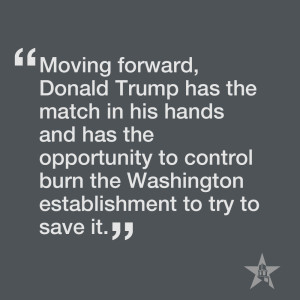 One day, three teenage boys show up on the farm and trespass onto the plantation. The boys names are Garfield Smith (played by Newt Gingrich), W.T. Harper (played by Rudy Guiliani), and their leader Powel Boyd (played by Donald Trump). Powel is wild and an unpredictable outsider who uses foul language, smokes cigarettes, and has little respect for the elite plantation structure. Powel is on the farm to rekindle something lost from his idyllic childhood (Making America Great Again). Mrs. Cope doesn’t want this basket full of deplorables on her farm, but she allows them to stay even when they prove too much for her to control. She offers them sandwiches and drinks, but similar to the Book of Daniel 1:11-13, the boys refuse it because Mrs. Cope wants them to submit to her orders. Instead, the boys walk outside to the barn and steal milk. Mrs. Cope is concerned their cigarette smoking will start a fire since the farm has suffered a summer long drought. Night falls and the boys want to go to sleep in the barn, but Mrs. Cope insists they sleep in the field due to her fear that they will burn down the barn. The following day, the boys wake up and defy Mrs. Cope by riding her horses and letting the bull loose. Later in the afternoon, Mrs. Cope sees the boys throwing rocks at her mailbox and tells them she is going to call the police. The boys disappear, but as night falls Mrs. Cope smells smoke and sees the forest on her property is on fire. As she gets her servants, she approaches the fire and hears the boys laughter dancing in the fiery furnace of her forest. As fire engulfs the property, Mrs. Cope’s biggest fears have been realized. Her fortress was more fragile than she thought and her control is gone.
One day, three teenage boys show up on the farm and trespass onto the plantation. The boys names are Garfield Smith (played by Newt Gingrich), W.T. Harper (played by Rudy Guiliani), and their leader Powel Boyd (played by Donald Trump). Powel is wild and an unpredictable outsider who uses foul language, smokes cigarettes, and has little respect for the elite plantation structure. Powel is on the farm to rekindle something lost from his idyllic childhood (Making America Great Again). Mrs. Cope doesn’t want this basket full of deplorables on her farm, but she allows them to stay even when they prove too much for her to control. She offers them sandwiches and drinks, but similar to the Book of Daniel 1:11-13, the boys refuse it because Mrs. Cope wants them to submit to her orders. Instead, the boys walk outside to the barn and steal milk. Mrs. Cope is concerned their cigarette smoking will start a fire since the farm has suffered a summer long drought. Night falls and the boys want to go to sleep in the barn, but Mrs. Cope insists they sleep in the field due to her fear that they will burn down the barn. The following day, the boys wake up and defy Mrs. Cope by riding her horses and letting the bull loose. Later in the afternoon, Mrs. Cope sees the boys throwing rocks at her mailbox and tells them she is going to call the police. The boys disappear, but as night falls Mrs. Cope smells smoke and sees the forest on her property is on fire. As she gets her servants, she approaches the fire and hears the boys laughter dancing in the fiery furnace of her forest. As fire engulfs the property, Mrs. Cope’s biggest fears have been realized. Her fortress was more fragile than she thought and her control is gone.